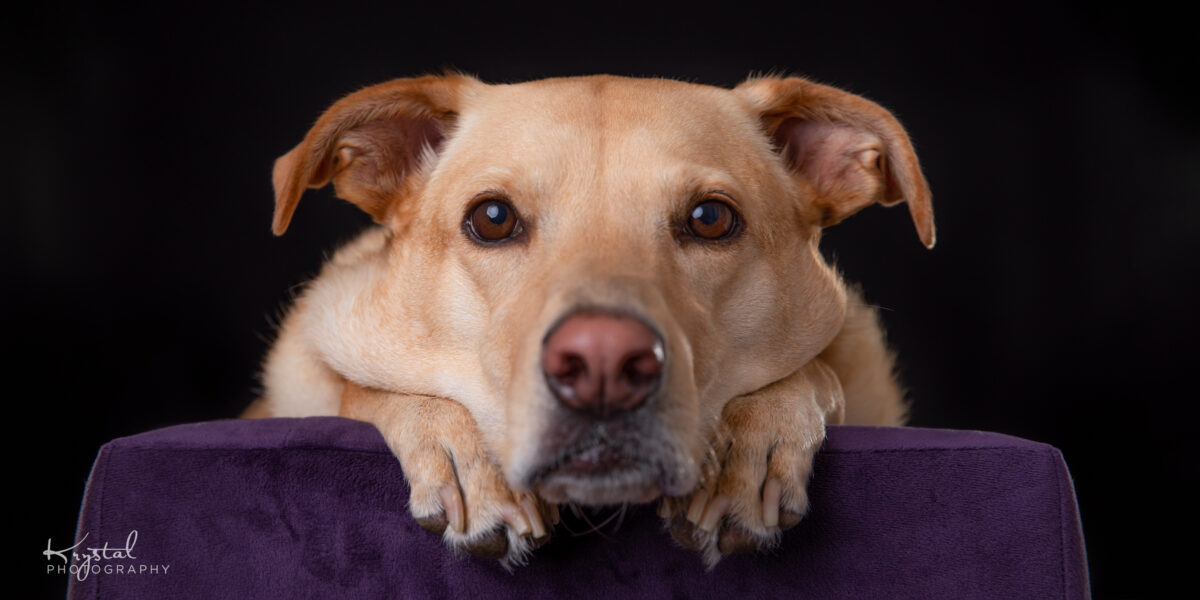You’d love to have some professional photos of your beloved dog, but she’s often anxious or stressed in new situations or around new people. Here’s how to help prepare her for her closeup and get the photographic memories of your dreams.
- Interview your photographer: When researching photographers, ask what methods and techniques they use when working with dogs who show fear in novel situations (for example, clicker training).
- Discover your dog’s favorites: Have fun experimenting to find out what motivates your dog. Food is an obvious first choice. Consider trying high-value treats (think hotdog, cheese, chicken, deli turkey) or a favorite toy or ball. Are there any phrases that really get her excited (“walk” or “ride”)? With this information, you and the photographer can better direct her attention toward the camera to capture the best moments.
- Provide warm-up time: Ask the photographer if you can arrange one or more meet-and-greet appointments prior to your photoshoot. This will enable your pup to become comfortable around this new person.
- Allow for exploration: During these appointments, with the photographer’s permission and guidance, allow your dog to safely explore the photography studio, including the camera and lighting equipment. Request a lighting test to determine if your dog is sensitive to the sudden “pop” of light. If you notice fearful body language, work as a team to pair the camera flash with something your dog loves (think back to those hotdogs). If there isn’t enough time for this process before your photoshoot, ask to pivot to an outdoor session.
- Be part of the memory: One of the best ways to help your dog remain comfortable during a photoshoot is to be in the portraits with them! If she sticks to you like glue, lean into that and celebrate the comfort she feels when snuggled up in your lap! To look your best, ask the photographer for advice on wardrobe options to complement your dog’s coloring and the studio background.
- Consider using furniture as props: If your photographer plans to use any furniture, you can practice at home with a similar item. During the photoshoot, a chair, bench, or ottoman can be a helpful visual target for your pup as opposed to an arbitrary spot on the ground. Reminder: it’s beneficial to practice with positions or poses you might want to have photographed, such as paws over an armrest or “head down” resting on the armrest, or “paws up” on your shoulders like a hug.
- Be flexible and patient: Keep an open mind and trust that even with a dog who is uncertain about the process, a photographer can still capture amazing photos. You may need to give your dog a little grace with respect to posing expectations. Allow the photographer to guide you and your dog into position and accept that you might not get everything “just right” on the first try. Your photographer will help reset the scene as many times as needed, within reason.
- Advocate for your dog: Pet photography sessions tend to be “controlled chaos.” The best pet photographers proceed at the dog’s pace and never force anything! In the end, youshould feel empowered to speak up if your dog needs a breather. This may include a few minutes to play, a drink of water, or a sniff break outside.
This article was reviewed/edited by board-certified veterinary behaviorist Dr. Kenneth Martin and/or veterinary technician specialist in behavior Debbie Martin, LVT.








